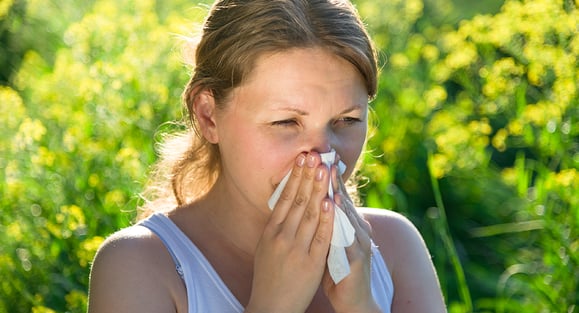Labor Day Weekend is the official celebration of the American worker. It also signifies the unofficial launch of fall allergy season.
If you live in the Midwest, you know about pollen counts - which spike in September and stay steadily high until the first frost, usually in late October. For fall allergy suffers, everyday life requires a combination of tactics for relief.

The primary culprit is ragweed, the biggest fall allergy according to WedMD. Mold spores also become airborne after growing on wet leaves on the ground. Dust mites become more prominent when you turn on your heat for the first time since last spring.
Fall allergies trigger runny noses, watery eyes, sneezing, coughing and itching. In worst cases, life becomes miserable – especially if you have to miss those fun fall outdoor activities like pumpkin festivals and football games.
Here are a few ways to ease the suffering from fall allergies:
Wash away pollens after being outside. If you have spent time outdoors, take a shower or bath as soon as possible when you come inside. This helps avoid dragging pollens throughout your home, especially into your bed.
Change your clothes before coming in. If you did yardwork or took a long walk, change out your shirt, pants and socks in the garage. This also helps keeps allergens out of the house.
Wear a mask outside. One that is designed to reduce pollens and allergens can be helpful when mowing the lawn or exercising. The most effective masks are rated by the National Institute for Occupational Safety and Health.
Replace air conditioning/furnace filters. HEPA filters are designed to remove allergen particles.
Use a dehumidifier, especially in your bedroom. Molds and dust mites thrive in a humid environment. Set the humidity level to between 35 and 50 percent.
Keep your laundry indoors. Pollen easily attaches to clothes. Shirts and pants dried in the wind might have that fresh air smell when taken in, but they will be loaded with allergens.
Use an air conditioner at night. For most people, a cool breeze coming in through an open bedroom window makes for a good night’s sleep. For fall allergy suffers, it’s an environment for misery.
Take over-the-counter medication. Well-known brands such as Claritin and Allegra help reduce allergy symptoms. The American Academy of Allergy, Asthma and Immunology recommends taking the medicines before going outside and using only the doseage listed on the label.
Use nasal sprays and eye drops. These targeted medicines can ease congestion and itchy eyes in the short term. But allergists caution against overuse and a “rebound effect”, meaning these drugs can make your symptoms worse.
Rinse your sinuses. Nasal irrigation systems such as a Neti Pot or NeilMed Sinus Rinse provide relief and remove tiny pollen particles from nasal passages. Allergists recommend doing nasal irrigation several times a day during the height of pollen season.
Removing pollens and reducing allergy symptoms are important for your overall health. Chronic congestion can lead to sinus infections, which can be painful and debilitating.
If you chronically suffer each fall, you might consider undergoing allergy testing to identify your specific culprits. Long-term immunotherapy (allergy) shots can help your body build up a natural resistance to those specific allergens and reduce the symptoms.
